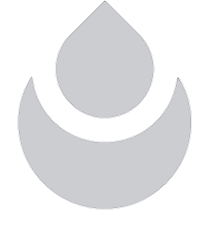Understanding Burnout and its Impact
Defining Burnout
Burnout is a state of chronic physical and emotional exhaustion resulting from prolonged stress. It occurs when we feel overwhelmed, emotionally drained, and unable to meet constant demands. Over time, this stress can lead to reduced productivity and a sense of helplessness.
Effects of Burnout on Mental Health
Burnout significantly impacts our mental health. It can lead to various psychological issues such as anxiety, depression, and problems with concentration and memory. Severe burnout might also contribute to feelings of hopelessness or clinical depression. Various studies highlight the correlation between burnout and mental health disorders, underlining the importance of addressing burnout through approaches like psychotherapy for stress management.
| Mental Health Impact | Frequency (%) |
|---|---|
| Increased Anxiety | 60 |
| Depressive Symptoms | 45 |
| Cognitive Impairment | 40 |
| Emotional Exhaustion | 70 |
Signs and Symptoms of Burnout
It’s crucial to recognize the signs and symptoms of burnout early to seek timely intervention. Common signs of burnout include:
- Physical symptoms: Chronic fatigue, headaches, muscle tension, and changes in sleep patterns.
- Emotional symptoms: Feelings of helplessness, detachment, lack of motivation, and irritability.
- Behavioral symptoms: Poor performance at work, withdrawal from social interactions, and neglecting personal responsibilities.
Individuals experiencing these symptoms might benefit from professional help like psychotherapy for anxiety or psychotherapy for depression.
| Type of Symptom | Common Signs |
|---|---|
| Physical | Fatigue, headaches |
| Emotional | Helplessness, detachment |
| Behavioral | Poor performance, withdrawal |
Understanding burnout’s extensive impact helps us recognize the need for holistic treatment options, including psychotherapy to promote recovery and emotional well-being. For more information, explore how psychotherapy for trauma and other conditions can support mental health.
The Role of Psychotherapy in Burnout Recovery
What is Psychotherapy?
Psychotherapy, often referred to as “talk therapy,” is a collaborative treatment between a therapist and a client that aims to explore thoughts, feelings, and behaviors. Through various therapeutic techniques, psychotherapy helps individuals understand and manage their mental health issues, including psychotherapy for anxiety, psychotherapy for depression, and psychotherapy for stress management.
Psychotherapy can take many forms, from individual to group sessions, and can address a range of issues like psychotherapy for trauma, psychotherapy for self-esteem, and psychotherapy for sleep disorders. In the context of burnout recovery, psychotherapy provides a structured approach to help individuals recognize the underlying causes of their burnout and develop strategies to cope and recover.
How Psychotherapy Helps with Burnout
Psychotherapy offers multiple benefits for those experiencing burnout. Let’s explore how it can help:
-
Identifying Root Causes: Psychotherapists guide us in identifying the root causes of our burnout. This could include work-related stress, lack of work-life balance, or personal issues.
-
Developing Coping Mechanisms: Therapy sessions provide us with effective coping mechanisms to manage stress and prevent future burnout. This includes techniques like mindfulness, problem-solving skills, and time management.
-
Emotional Support: Through psychotherapy, we receive emotional support and validation, which is crucial for recovering from burnout. Having a safe space to express ourselves helps mitigate the emotional toll burnout can have.
-
Behavioral Changes: Therapists help us recognize and modify unhealthy behaviors and thought patterns that contribute to burnout. This is particularly relevant for those seeking psychotherapy for social anxiety or psychotherapy for anger management.
-
Goal Setting: Psychotherapy involves setting realistic and achievable goals for recovery. This helps us track our progress and stay motivated throughout the recovery journey.
Here is a table summarizing the benefits of psychotherapy for burnout recovery:
| Benefit | Description |
|---|---|
| Identifying Root Causes | Uncovering underlying stressors |
| Developing Coping Mechanisms | Strategies to manage and reduce stress |
| Emotional Support | Safe space for expression and validation |
| Behavioral Changes | Modification of unhealthy patterns |
| Goal Setting | Structured approach to track progress |
For those dealing with burnout, integrating psychotherapy can significantly aid in recovery and help prevent future instances. By committing to the therapeutic process, we can regain control over our mental health and improve our overall well-being. For additional insights on how psychotherapy can address various mental health challenges, explore our articles on psychotherapy for ptsd, psychotherapy for life transitions, and psychotherapy for grief and loss.
Types of Psychotherapy for Burnout
Various types of psychotherapy can help in addressing and recovering from burnout. Here, we explore three major approaches: Cognitive Behavioral Therapy (CBT), Mindfulness-Based Therapies, and Psychodynamic Therapy.
Cognitive Behavioral Therapy (CBT)
Cognitive Behavioral Therapy (CBT) is a widely utilized form of psychotherapy that focuses on identifying and altering negative thinking patterns and behaviors. Through CBT, individuals learn to reframe cognitive distortions and develop healthier coping mechanisms. This form of therapy is particularly effective for those experiencing burnout by enabling us to:
- Identify and challenge negative thoughts
- Develop proactive problem-solving strategies
- Enhance emotional regulation
A regular CBT session may involve structured exercises and homework assignments designed to reinforce the skills learned during therapy. For more insights on how CBT helps with other conditions, explore our article on psychotherapy for anxiety.
Mindfulness-Based Therapies
Mindfulness-Based Therapies incorporate techniques such as meditation, deep breathing, and mindfulness exercises to help individuals stay present and focused. These therapies are especially beneficial for individuals dealing with burnout, as they promote relaxation and stress reduction. Common mindfulness-based approaches include:
- Mindfulness-Based Stress Reduction (MBSR)
- Mindfulness-Based Cognitive Therapy (MBCT)
These therapies help us cultivate awareness and acceptance of our thoughts and emotions without judgment, thereby reducing stress and enhancing overall well-being. For more information on related mindfulness practices, see our article on psychotherapy for stress management.
Psychodynamic Therapy
Psychodynamic Therapy delves into the underlying unconscious processes that influence our behavior. This form of therapy focuses on understanding the root causes of burnout by exploring past experiences and emotional conflicts. Key aspects of psychodynamic therapy include:
- Exploring unresolved issues and internal conflicts
- Gaining insight into emotional patterns
- Developing a deeper understanding of oneself
Through Psychodynamic Therapy, we can achieve long-term emotional growth and address the deep-seated issues contributing to burnout. This therapeutic approach can also assist with other emotional challenges as detailed in our article on psychotherapy for trauma.
Understanding the different types of psychotherapy for burnout can help us choose the most suitable approach for our needs. Each therapy offers unique techniques and benefits, enabling individuals to regain balance and improve their mental health. By combining psychotherapy with appropriate self-care practices, we can work towards sustainable recovery and long-term well-being.
Finding the Right Psychotherapist
Selecting the right psychotherapist is essential for effective burnout recovery. Here’s what we should consider when seeking a professional to help us navigate through burnout.
Qualifications and Credentials
It’s important to verify that the psychotherapist is licensed and has the appropriate credentials. Psychotherapists often have different educational backgrounds, such as psychology, social work, or counseling. Look for certifications that indicate specialized training in psychotherapy techniques.
Common Qualifications and Credentials:
| Credential | Description |
|---|---|
| Licensed Clinical Social Worker (LCSW) | Master’s level social worker trained in psychotherapy |
| Licensed Professional Counselor (LPC) | Master’s level counselor trained in various therapy techniques |
| Licensed Psychologist (PhD or PsyD) | Doctoral level professional specialized in psychology |
| Board Certified | Certification by recognized boards such as the American Board of Professional Psychology |
Personal Fit and Trust
Our comfort and trust in the psychotherapist are crucial for successful therapy. It’s essential to find a professional whose style matches our preferences and whose approach aligns with our needs. Initial consultations can help determine if we feel comfortable discussing personal issues with them.
Consider asking the following questions during the initial consultation:
- How would they describe their therapy approach?
- What is their experience with treating burnout?
- What should we expect during a typical therapy session?
Accessibility and Logistics
Therapy should be accessible and fit into our schedules without causing additional stress. Consider the location of the therapist’s office, their availability, and whether they offer virtual sessions. It’s also important to understand the financial aspects, such as their fees and whether they accept insurance.
Factors to Consider:
| Factor | Considerations |
|---|---|
| Location | Proximity to home/work, ease of commute |
| Session Format | In-person, virtual, or hybrid |
| Availability | Flexibility in scheduling, emergency sessions |
| Cost | Session fees, insurance acceptance, sliding scale fees |
Finding the right psychotherapist involves evaluating their qualifications, ensuring a personal fit, and considering logistical aspects. By carefully selecting a professional, we can enhance our journey to recovery from burnout. For more related information, explore our articles on psychotherapy for anxiety and psychotherapy for stress management.
The Process of Psychotherapy for Burnout Recovery
Initial Assessment and Goal Setting
The first step in beginning psychotherapy for burnout recovery is the initial assessment. During this phase, we work with our therapist to identify the specific issues contributing to our burnout. This involves discussing our symptoms, stressors, and overall mental health history.
The therapist will gather detailed information to create a personalized treatment plan. This plan will outline the main goals of therapy and the strategies to achieve them. Setting clear, achievable goals is vital as it provides a roadmap for our recovery process.
| Assessment Component | Description |
|---|---|
| Symptom Discussion | Identifying primary symptoms of burnout |
| Stressors Identification | Recognizing factors causing burnout |
| Mental Health History | Reviewing past and current mental health issues |
| Goal Setting | Establishing clear, attainable therapy goals |
Therapy Sessions and Techniques
Once the initial assessment is complete, we begin regular therapy sessions. These sessions are typically held once a week, but the frequency can vary depending on our individual needs and the severity of our burnout.
During these sessions, the therapist employs various techniques tailored to our goals. Common approaches used in [psychotherapy for burnout] include Cognitive Behavioral Therapy (CBT), mindfulness practices, and psychodynamic therapy. Each technique offers unique benefits, helping us acquire coping skills, challenge negative thought patterns, and understand underlying emotional conflicts.
| Therapy Technique | Benefits |
|---|---|
| Cognitive Behavioral Therapy (CBT) | Helps identify and change negative thought patterns |
| Mindfulness Practices | Promotes relaxation and stress reduction |
| Psychodynamic Therapy | Explores underlying emotional conflicts |
Progress Tracking and Adjustments
Ongoing assessment is a critical component of the psychotherapy process. Tracking our progress allows both us and our therapist to see how well the treatment is working and to make necessary adjustments.
Regular evaluations ensure that our therapy goals remain relevant and attainable. Adjustments might include changing therapy techniques, modifying session frequency, or setting new goals as we make progress.
| Progress Evaluation | Purpose |
|---|---|
| Regular Check-ins | Monitor progress and symptom improvement |
| Technique Adjustment | Modify therapy techniques as needed |
| Goal Reassessment | Set new goals based on progress |
Throughout our journey in psychotherapy, it’s essential to remain open and communicate effectively with our therapist. By actively participating in our treatment and being receptive to feedback, we maximize the benefits of therapy and move closer to overcoming burnout.
For more information on the various types of psychotherapy, visit our articles on psychotherapy for anxiety, psychotherapy for depression, and psychotherapy for stress management.
Integrating Psychotherapy with Self-Care
Integrating psychotherapy with self-care plays a crucial role in effectively managing and recovering from burnout. As we explore this integration, let’s consider the importance of self-care practices, balancing psychotherapy with lifestyle changes, and implementing long-term strategies for burnout prevention.
Importance of Self-Care Practices
Self-care practices are essential for maintaining mental and emotional well-being, particularly when recovering from burnout. By incorporating these practices into our daily routines, we support the healing process facilitated by psychotherapy. Self-care can include activities such as:
- Regular exercise
- Healthy eating habits
- Adequate sleep
- Mindfulness and meditation
- Socializing with supportive friends and family
These practices help us manage stress levels, improve mood, and increase overall resilience. For those undergoing psychotherapy for stress management, combining therapy with self-care can significantly enhance recovery outcomes.
| Self-Care Activity | Recommended Frequency | Benefits |
|---|---|---|
| Exercise | 30 minutes, 5 days a week | Reduces stress, boosts mood |
| Healthy Eating | Daily | Improves energy, supports overall health |
| Sleep | 7-9 hours per night | Enhances cognitive function, mood |
| Mindfulness | 10-20 minutes daily | Reduces anxiety, increases focus |
| Social Interaction | Weekly | Provides emotional support, reduces loneliness |
Balancing Psychotherapy with Lifestyle Changes
Balance is key when integrating psychotherapy with lifestyle changes. It’s important to create a harmonious balance between therapy sessions and healthy daily habits. Here are some strategies to help us achieve this balance:
- Schedule regular therapy sessions to maintain consistency.
- Set realistic and achievable goals for lifestyle changes.
- Incorporate self-care activities into the daily routine.
- Communicate openly with the therapist about challenges and progress.
By balancing psychotherapy with positive lifestyle changes, we can create a supportive environment that fosters healing and recovery. This approach is particularly beneficial for individuals undergoing psychotherapy for depression or psychotherapy for anxiety.
Long-Term Strategies for Burnout Prevention
Preventing burnout in the long term requires a proactive approach that combines psychotherapy with sustainable self-care practices. Here are some long-term strategies to consider:
- Develop a self-care plan that includes regular therapy check-ins.
- Cultivate a support network of friends, family, and professionals.
- Continuously evaluate and adjust self-care routines to meet evolving needs.
- Practice stress management techniques, such as mindfulness and relaxation exercises.
- Stay informed about burnout prevention through continuous learning and resources.
By adopting these long-term strategies, we can build resilience and reduce the risk of future burnout. Integrating psychotherapy with self-care is an ongoing process that helps us maintain mental and emotional health. For more insights, visit our guide on psychotherapy for stress management.
| Strategy | Action Steps | Benefits |
|---|---|---|
| Self-Care Plan | Regular therapy, self-care activities | Sustains mental health |
| Support Network | Build relationships, seek help | Provides emotional support |
| Routine Evaluation | Assess and modify practices | Adapts to changing needs |
| Stress Management | Practice relaxation, mindfulness | Reduces burnout risk |
| Continuous Learning | Stay updated on resources | Enhances knowledge |
Integrating psychotherapy with self-care not only aids in burnout recovery but also equips us with the tools necessary for long-term well-being. Through consistent therapy, balanced lifestyle changes, and proactive prevention strategies, we can achieve sustained mental health and resilience.














